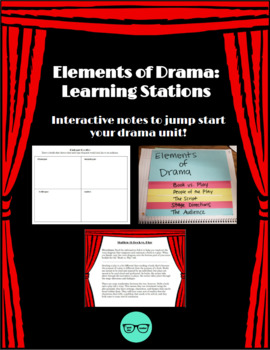Elements of Drama: Learning Stations
- Zip
What educators are saying
Description
This interactive lesson lets students discover different drama elements for themselves, rather than listening to a teacher monologue for the class period. Each station reviews different elements that are important for understanding how reading a play is different than reading a novel or short story.
Students will learn about stage directions, different types of dialogue, the people involved with putting on a play, and how audience members affect a performance. All of these concepts will help jump start your next ELA drama unit!
Included in your purchase is a lesson plan, a step-by-step guide on constructing the notes booklet, station instructions, notes handouts, and station activities. The hard work has been done for you; all you have to do is print and tape, and you are ready to go!




